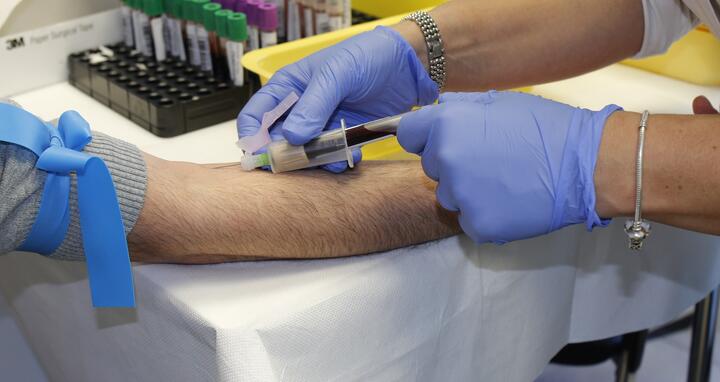Precise visualization of myocardial injury
In a world-first, researchers from Charité – Universitätsmedizin Berlin and the Max Delbrück Center for Molecular Medicine (MDC) have performed cardiac MRI imaging using a 7T MRI scanner in a patient-based study. 7T MRI imaging is a powerful new technology that allows high resolution images of the beating heart, and has the capability to provide valuable information of the myocardial (heart muscle) tissue structures. Results of the study, which has been published in the current issue of PLOS ONE*, show that the technology allows the visualizing of very subtle changes of the myocardial tissue structure in patients with abnormal thickening of the heart muscle.
Cardiovascular magnetic resonance imaging (CMR) is turning into a key technology in the diagnosis of myocardial disorders. The method is constantly evolving, and is becoming capable of visualizing both healthy and diseased tissue in increasingly minute detail, even in a heart with normal function. It gives new insights in the heart muscle and assess myocardial damage, including in patients with hypertrophic cardiomyopathy (HCM), a genetically determined abnormal thickening of the heart muscle. 7T MRI imaging is expected to be powerful at visualizing tissue structure at the microscopic scale, including pathological changes and minute depressions. The full capabilities are under evaluation.
In clinical practice, cardiac imaging is performed using 1.5T and 3T MRI scanners. 7T MRI scanners, which constitute a further refinement of the technology, operate at a higher field strength, offering significantly improved resolution as a result. Most of these new scanners remain to be certified for routine clinical use, meaning that their use is limited to research applications; there are currently only five centers in the world capable of visualizing the beating heart using the 7T MRI technology. The biggest challenge of CMR imaging is the heart’s constant movement.
The research group led by Prof. Dr. Jeanette Schulz-Menger, Head of the Experimental and Clinical Research Center’s (ECRC) Cardiac Outpatient Department– a facility jointly run by Charité and the MDC and head of the head of the Working Group CMR at ECRC in cooperation with the HELIOS-clinics – was the first to assess the technology’s potential in relation to patients with HCM. “Our aim was to test the potential of 7T MRI scanning in patients with hypertrophic cardiomyopathy, and to test whether the technology is capable of visualizing even the smallest morphological changes,” explains the cardiologist who specializes in CMR. The researchers succeeded in detecting ‘myocardial crypts’ – minute clefts or fissures which have so far been impossible to visualize in clinical practice in this location.
Their success was made possible as a result of close cooperation with a research group at the MDC’s Berlin Ultrahigh Field Facility (B.U.F.F.), which was led by Prof. Thoralf Niendorf. Together, the researchers compared data obtained from patients with abnormal thickening of the heart muscle who had undergone scanning using both a 7T MRI scanner with 2D CINE imaging and a 3T MRI scanner. The researchers also studied images obtained from healthy volunteers, and using the new generation of MRI scanners.
Following analysis, the researchers concluded that the use of 7T MRI gives new information in patients with hypertrophic cardiomyopathy. “In seven out of 13 patients, we were able to adequately visualize minute depressions in the myocardial tissue of the left ventricle,” says the study’s first author, Dr. Marcel Prothmann. “The technology’s high spatial resolution constitutes a massive leap forwards in terms of imaging quality. It allows the precise visualization of structural changes within areas of extensive thickening,” says Dr. Prothmann. High-resolution imaging may allow us to make more informed diagnoses when faced with a case of heart failure or another type of heart disease.
*Prothmann M, von Knobelsdorff-Brenkenhoff F, Töpper A, Dieringer MA, Shahid E, Graessl A, et al. (2016): High Spatial Resolution Cardiovascular Magnetic Resonance at 7.0 Tesla in Patients with Hypertrophic Cardiomyopathy – First Experiences: Lesson Learned from 7.0 Tesla.“ PLoS ONE 11(2): e0148066. doi:10.1371/journal.pone.0148066
Image of microscopic myocardial tissue structure showing ‘myocardial crypts’ – minute clefts or fissures (arrows). Left: 7T MRI with high-resolution CINE imaging. Right: 3T MRI with contrast enhancement. Copyright: Charité – Universitätsmedizin Berlin
Contact
Josef Zens
Press officer
+49-30-9406-2118
presse@mdc-berlin.de






